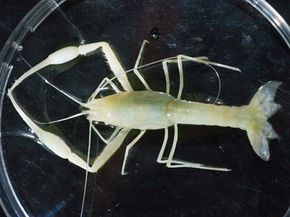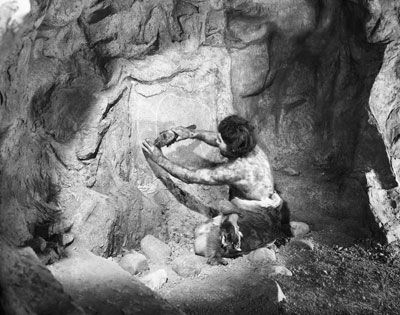Spelunking. Go ahead, say it out loud -- it's a funny word. Spelunking.
Spelunking is the recreational exploration of caves. The scientific exploration of caves has a different name. It's called speleology. In the same vein, you can probably guess what biospeleology is. It's the biology of caves, or cave biology.
Advertisement
Biospeleologists study cave organisms, as well as the ecosystems of caves. The unique conditions of caves make cave life mysterious and challenging to research. Caves are in constant darkness with high humidity. Nutrients are hard to come by, and many caves contain mixtures of gases (sulfur, methane) that can be lethal to many life-forms. Yet many organisms have evolved and adapted to live in this dank, dark environment.
Although the environment seems uninhabitable, you'll find lots of animals, insects, fish and crustaceans deep in our Earth's caves. The most recognizable cave dweller is probably the bat. Along with these little flying beasts, caves play home to a host of other creatures, including fish, salamanders, insects, spiders, shrimp, crickets and a variety of fungi and bacteria. Some animals call a cave home only part-time like bears, raccoons and even humans.
The majority of cave-dwelling organisms actually descended from aboveground species, thousands or even millions of years ago. How did that happen? Some animals with traits suited to the cave environment split from the pack and migrated into caves. This separation from their aboveground counterparts is what allowed those species to flourish and adapt to living underground. We call this process regressive evolution. Some species actually lost features such as eyes or skin pigmentation. It sounds bizarre and fantastical, but if you think about it, you really don't need these things if you live in perpetual darkness.
Researchers believe that by studying the genetic adaptations of these organisms, we can learn more about how biology works. For example, cave animals are excellent models for studying the genetics of abnormal eye development. Cave organisms also have evolved metabolisms. Because nutrients are so hard to come by in a cave, cave organism's metabolisms adapt to work more efficiently on much less. Environmental researchers also look to cave fish as indicators of water quality. Much of our drinking water passes through a cave ecosystem at some point [source: MGS].
Let's tunnel down into the cave and see what lives there on the next page.

